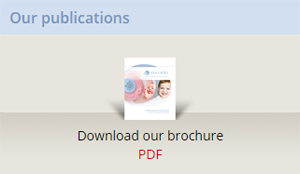
Our scientific team coordinated by Dr.T.lainas has published several reports/studies in scientific magazines or congresses.
- Pioneer scientific work
- Scientific papers published in international scientific journals - The importance of publications
- Abstracts presented in international and national conferences
Pioneer scientific work
 Our team coordinated by Dr.T.Lainas already numbers a long series of scientific articles in esteemed scientific journals specialized in Human Reproduction and In Vitro fertilization.
Our team coordinated by Dr.T.Lainas already numbers a long series of scientific articles in esteemed scientific journals specialized in Human Reproduction and In Vitro fertilization.
Particularly, we have published the largest study, that has ever been undertaken in the international literature regarding women with poor ovarian response (poor responders). The number of women included in this study is by far the greatest in comparison with other relevant published issues. It shows that the use of the new pharmaceutical protocol has statistically higher success rates and has been published in Human Reproduction journal(official journal of European Society for Human Reproduction and Embryology - ESHRE).
In addition, in a more recent study of our Unit, which is the largest worldwide with regard to the number of patients with polycystic ovarian syndrome, we show that the use of the flexible protocol of GnRH antagonist results in an approximately 20% reduction of the PCOS, when compared to the protocol, without reducing of pregnancy rates.
Furthermore, we achieved a safe and effective management of the established severe ovarian hyperstimulation syndrome, along with the first births of healthy babies. Our study about the management of severe OHSS was described as an original idea by the scientific journal reviewers. The safety and effectiveness of this method challenges the current dogma that the only safe OHSS prevention method is cycle cancellation, which of course has many psychological and economical implications.
At last, in a recent study, we have shown that the Natural Cycle protocol leads to higher birth rates that the common protocols in women with poor ovarian response.
At Eugonia, we strongly believe that only through research and constant development we progress and increase our clinical pregnancy rates following assisted reproduction treatment.






























